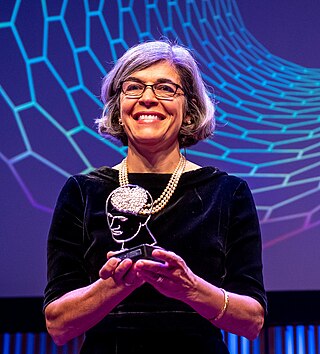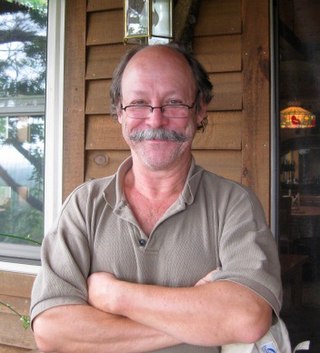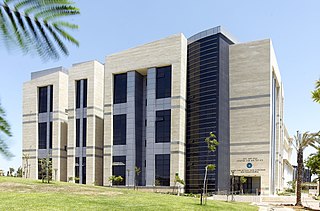
Neurology is the branch of medicine dealing with the diagnosis and treatment of all categories of conditions and disease involving the nervous system, which comprises the brain, the spinal cord and the peripheral nerves. Neurological practice relies heavily on the field of neuroscience, the scientific study of the nervous system.

Neuroscience is the scientific study of the nervous system, its functions, and its disorders. It is a multidisciplinary science that combines physiology, anatomy, molecular biology, developmental biology, cytology, psychology, physics, computer science, chemistry, medicine, statistics, and mathematical modeling to understand the fundamental and emergent properties of neurons, glia and neural circuits. The understanding of the biological basis of learning, memory, behavior, perception, and consciousness has been described by Eric Kandel as the "epic challenge" of the biological sciences.
The following outline is provided as an overview of and topical guide to neuroscience:
Neuroimaging is a medical technique that allows doctors and researchers to take pictures of the inner workings of the body or brain of a patient. It can show areas with heightened activity, areas with high or low blood flow, the structure of the patients brain/body, as well as certain abnormalities. Neuroimaging is most often used to find the specific location of certain diseases or birth defects such as tumors, cancers, or clogged arteries. Neuroimaging first came about as a medical technique in the 1880s with the invention of the human circulation balance and has since lead to other inventions such as the x-ray, air ventriculography, cerebral angiography, PET/SPECT scans, magnetoencephalography, and xenon CT scanning.
Neuropsychiatry is a branch of medicine that deals with psychiatry as it relates to neurology, in an effort to understand and attribute behavior to the interaction of neurobiology and social psychology factors. Within neuropsychiatry, the mind is considered "as an emergent property of the brain", whereas other behavioral and neurological specialties might consider the two as separate entities. Those disciplines are typically practiced separately.

Neuroimaging is the use of quantitative (computational) techniques to study the structure and function of the central nervous system, developed as an objective way of scientifically studying the healthy human brain in a non-invasive manner. Increasingly it is also being used for quantitative research studies of brain disease and psychiatric illness. Neuroimaging is highly multidisciplinary involving neuroscience, computer science, psychology and statistics, and is not a medical specialty. Neuroimaging is sometimes confused with neuroradiology.
Neurophysics is the branch of biophysics dealing with the development and use of physical methods to gain information about the nervous system. Neurophysics is an interdisciplinary science using physics and combining it with other neurosciences to better understand neural processes. The methods used include the techniques of experimental biophysics and other physical measurements such as EEG mostly to study electrical, mechanical or fluidic properties, as well as theoretical and computational approaches. The term "neurophysics" is a portmanteau of "neuron" and "physics".
UCL Neuroscience is a research domain that encompasses the breadth of neuroscience research activity across University College London's (UCL) School of Life and Medical Sciences. The domain was established in January 2008, to coordinate neuroscience activity across the many UCL departments and institutes in which neuroscience research takes place. In 2014, the Nobel Prize in Physiology or Medicine was awarded to the UCL neuroscientist John O'Keefe. In two consecutive years 2017 and 2018, the Brain Prize, the world's most valuable prize for brain research at €1m, was awarded to UCL neuroscientists Peter Dayan, Ray Dolan, John Hardy, and Bart De Strooper.

Anna Christina Nobre FBA, MAE, fNASc is a Brazilian and British cognitive neuroscientist working at Yale University in New Haven, CT, USA.
Hanna Damasio is a scientist in the field of cognitive neuroscience. Using computerized tomography and magnetic resonance imaging, she has developed methods of investigating human brain structure and studied functions such as language, memory, and emotion, using both the lesion method and functional neuroimaging. She is currently a Dana Dornsife Professor of Neuroscience and Director of the Dana and David Dornsife Cognitive Neuroscience Imaging Center at the University of Southern California.

Mark S. George is a Distinguished University Professor of psychiatry, radiology and neurosciences and is the director of the Medical University of South Carolina (MUSC) Center for Advanced Imaging Research as well as the Brain Stimulation Laboratory. As of June 2020, his research has been cited over 47,000 times, with an h-index of 113 and i-10 index of 404.
Anders Martin Dale is a prominent neuroscientist and professor of radiology, neurosciences, psychiatry, and cognitive science at the University of California, San Diego (UCSD), and is one of the world's leading developers of sophisticated computational neuroimaging techniques. He is the founding Director of the Center for Multimodal Imaging Genetics (CMIG) at UCSD.
Mark Steven Cohen is an American neuroscientist and early pioneer of functional brain imaging using magnetic resonance imaging. He currently is a Professor of Psychiatry, Neurology, Radiology, Psychology, Biomedical Physics and Biomedical Engineering at the Semel Institute for Neuroscience and Human Behavior and the Staglin Center for Cognitive Neuroscience. He is also a performing musician.
The following outline is provided as an overview of and topical guide to brain mapping:
Single Scan Dynamic Molecular Imaging Technique is a positron emission tomography (PET) based neuroimaging technique that allows detection of dopamine released in the brain during a cognitive or behavioral processing. The technique was developed by a psychiatry resident Rajendra Badgaiyan and his colleagues at Massachusetts General Hospital Boston.. The technique has been used to detect dopamine released during cognitive, behavioral and emotional tasks by a number of investigators. This technique has for the first time allowed scientists to detect changes in the concentration of neurotransmitters released acutely during task performance. It expanded the scope of neuroimaging studies by allowing detection of neurochemical changes associated with the brain processing.
Pasquale Calabrese born 27 February 1961 in Naples, Italy, is an Italian professor of clinical neurosciences at the University of Basel, Faculty of Psychology, Department of Molecular and Cognitive Neurosciences. He is a neuroscientist, experimental neurologist and medical neuropsychologist.
Mary Louise Phillips is a Pittsburgh Foundation-Emmerling Endowed Chair in Psychotic Disorders and Professor of Psychiatry and Clinical and Translational Science at the University of Pittsburgh School of Medicine. As the director of the Mood and Brain Laboratory, Phillips performs neuroimaging research designed to elucidate the neuropathophysiological basis of bipolar disorders and associated behavioral traits.
Hugo Critchley is a British professor of psychiatry at Brighton and Sussex Medical School, a partnership of the University of Brighton and the University of Sussex.

Leslie and Susan Gonda Multidisciplinary Brain Research Center is a multidisciplinary neuroscience institution in Israel. It is affiliated with Bar-Ilan University.






